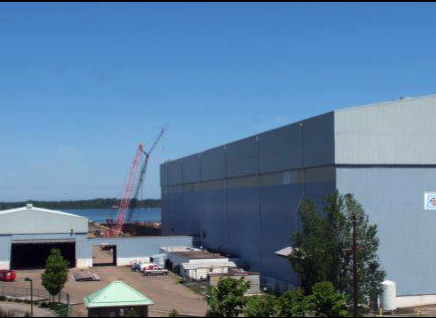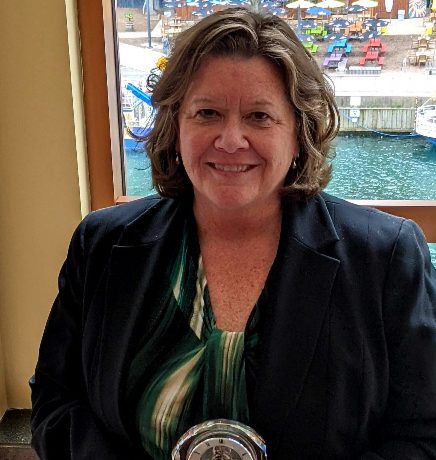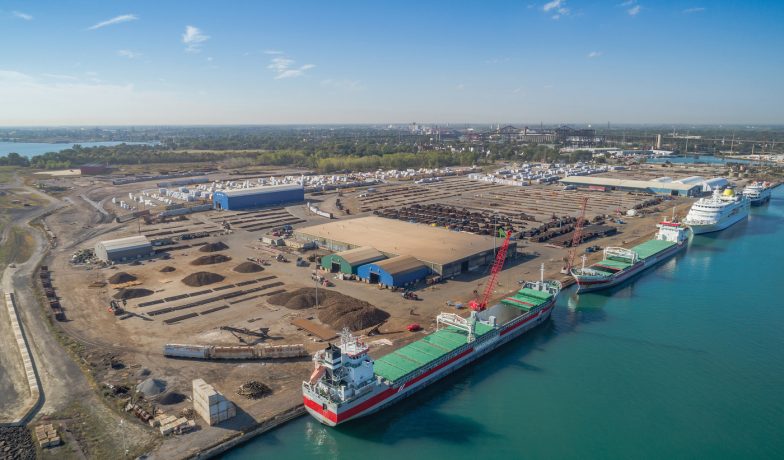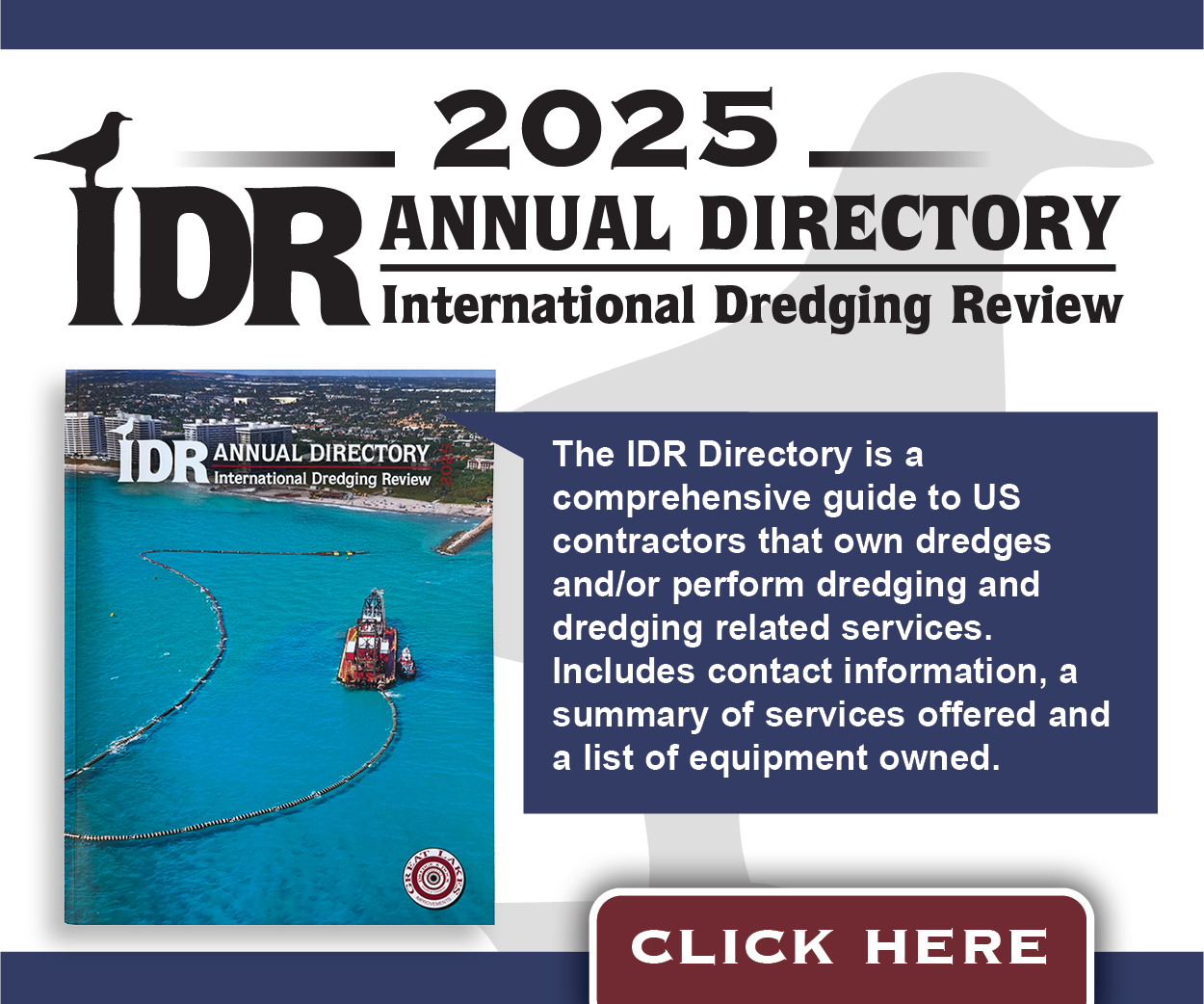New Chicago Leadership: Erik Varela Leaves Rail Focus to Lead the Illinois International Port District
During his time with the railroad, Varela served as chairman of the Illinois Railroad Association and on multiple boards and committees, including the Illinois Freight Advisory Council, CMAP Freight Committee, Cook County Economic Development Advisory Council and Metro Milwaukee Association of Commerce.
Prior to Union Pacific, he worked at various levels of local government for 15 years.
A graduate of DePaul Law School, Varela began government service as an attorney with the Law Offices of the Cook County Public Defender. Trading in courtrooms for board rooms, he went to work for the Chicago Park District and then the Forest Preserves of Cook County. He represented those agencies before the Chicago City Council and the Cook County Board. He undertook senior management and legal roles responsible for government and legislative affairs, real estate contract negotiations and drafting, litigation and trial work, FOIA Officer and others.
The years of government and legal service culminated with Varela serving as special assistant for government and legislative affairs for Cook County Board President Toni Preckwinkle.
Varela was born and raised in Chicago’s Albany Park and Humboldt Park neighborhoods. He currently resides in Logan Square with his wife and daughter. He recently made time to interact with Great Lakes/Seaway Review editor, Janenne Irene Pung, for this interview.
GL/SR:
First, Erik, congratulations on becoming executive director of the Illinois International Port District. As reported by the port board, you are the first Latino in the nation to lead a major port. What does this mean to you personally?
Varela:
It’s tremendously important. It’s an honor for me to be able to hold this position with that title. It’s unfortunate that it has taken this long for a Latino to lead in this way, but nonetheless, I do not take it lightly. I proudly wear that mantel moving forward.
GL/SR:
How will coming out of the railroad industry impact your role as a port leader where the intersection of land and water transportation are key factors?
Varela:
During my time at Union Pacific Railroad, I gained logistics experience. In the rail industry, you’re usually dealing with all modes of transportation. Here at the Illinois International Port District, we are both a Great Lakes port and an inland river port, and we have connectivity to six of the seven North American Class I railroads and access to seven major U.S. interstates within 10 miles of the port. There are many opportunities.
GL/SR:
What is your first order of business at the port?
Varela:
I understand what we’re needing to do here in terms of continuing to move cargo and ensure that the Chicago region remains the freight hub of the region. We will utilize the master plan and look at it through a lens of smart investment, engagement with our community and developing the port in an environmentally responsible way.
GL/SR:
In the announcement about your being hired, the board said you will solidify the IIPD as one of the most important domestic and international trade hubs. Please explain how you will go about doing so.
Varela:
There are two ways to go about it. First, there is a plan being developed right now and there’s going to be an implementation plan for moving the port forward. The port has done well over the past many years. But we recognize that we can do better. Some of that is due to the port’s unique location and connectivity. Our location and access to major railroads and highways is a major factor. The second way to solidify the port as a major trade hub is to take advantage of the amount of undeveloped land we have available – land that can be rail serviced, water served and truck served. There has been a lot of work done on market assessments and preparing the ports masterplan. We are going over them and looking at what peer ports are doing, what’s working for them. We need a clear roadmap to a reimagined port for the 21st Century. We will engage stakeholders and look for the best ways for the port to invest in itself and grow beyond 2050. The Chicago Metropolitan Agency for Planning predicts that the demand for freight in the Chicago region will grow 40% by 2040. The port district should look beyond legacy users and uses, consider best practices from other ports and multimodal facilities. This will help us leverage our strengths and overcome any obstacles to driving economic growth. The opportunities that lie before us are tremendous. When you take into the consideration the challenges the supply chain is facing, the demand for cargo and freight will just continue to grow.
GL/SR:
When speaking of acreage to develop, what is the overall acreage of the port and how many of those acres are available to be developed?
Varela:
The port district involves about 1,800 acres, which is a mix of industrial, commercial, recreational and preserved land. Of that, the last I saw, there are about 300 acres currently underdeveloped. There’s one area, 80 to 90 acres, that could be rail served and have dock access as well. There is a lot of opportunity coming down the pike there to increase inter-modal connectivity across the board.
GL/SR:
Can you elaborate on plans to improve the port’s modal interconnectivity?
Varela:
It’s evolving over time, but personally I am interested in increasing that intermodal connectivity. It goes back to the fact that we have a lot of undeveloped acreage right on Lake Calumet near the Bishop Ford Expressway, I-94 and other expressways. We are planning to use an Invest in Cook grant to engage some engineering experts to look at our rail infrastructure for where there are opportunities to improve that infrastructure in the Lake Calumet region, specifically to make ourselves more attractive to potential customers. There will be an RFP coming out for this and other projects. We are looking at the masterplan to guide us on what to do with the land, to think beyond the traditional legacy uses of a port and consider best practices on what other ports are doing. Are there synergies? How can we support and take advantage of existing barge traffic? We will look at all opportunities, and that can include recreational opportunities. As you probably know, we have Harborside Golf courses along the northern Lake Calumet area. There could be additional recreation development there. We’ve asked the folks developing the masterplan to take that into consideration, as well, to look at the developing going on around us, as well as focus on bringing jobs and being an economic driver. It’s no secret that demand for cargo on ships has declined historically since all our ports were built, but we’re looking at the areas of growth so we can continue to be economic engines.
GL/SR:
With privatization of the port resurfacing over years, do you foresee it entering the discussion again?
Varela:
I think that ship has sailed for the IIPD. I haven’t heard a word about it. I think folks have realized that what the port needs is a little investment in itself. And the State of Illinois, City of Chicago and federal government can help us get there. We have opportunities ahead of us. We’re ripe for growth and some of that is being recognized by the grants we’ve received and the money that’s been set aside specifically for ports.
GL/SR:
Looking to waterborne transportation, what is your focus from increasing the commodities and their amounts moving through the port?
Varela:
Coming from the railroad background, intermodal was a huge part of my life, especially here in Illinois. The Global 4 Intermodal Terminal facility has gotten so big that they call it an inland port now. Containers onboard ships is a big conversation, but the cost-benefit economies of scale aren’t there yet. There are new barges and technologies that can increase that container storage for movements. With 300 acres of developable land, I want to take that into consideration. Are there opportunities for intermodal connections for them here at the port – beyond barge traffic.
GL/SR:
As a point of interest, is the ghost ship still moored at your dock? [The 620-foot freighter has been moored at the port for decades and has been used for cement storage.]
Varela:
Yes, the ghost ship is still here. Considering that the ship does pay us rent to be there, at the moment I’m not forcing them out. Overall, our leadership would prefer we have access to that dock so we can look to develop other opportunities.
GL/SR:
With much of your experience being in inland transportation connections, how important is it for the port to expand waterborne business through the Great Lakes/Seaway system and into the Atlantic Ocean?
Varela:
It is important not only for economic reasons and to ensure necessary investments continue to be made into the Seaway system, but also to help our environment and our communities. It is well known that movement of freight via water is the most fuel efficient. By expanding waterborne commerce, not only are we using less fuel and reducing emissions, but we are also reducing congestions on our roads and railways, which reduces the impact to the environment and to those people who live and work around us.
GL/SR:
What are the primary investments needed at the port to draw more freighters to your docks?
Varela:
Our immediate need is to rehabilitate a deteriorating 110-year-old dock wall at our Iroquois Landing Lakefront Terminal. The dock wall facilitates the transfer of cargo to the multimodal transportation system via barge, rail and truck at IIPD and keeps the main river channel access open and functioning for ship traffic into and out of the Calumet River. Given its central location, the Iroquois Landing site is an essential supply chain link for the national, state and regional freight transportation systems.
GL/SR:
Do you have anything to add?
Varela:
Your readers can expect to see some exciting news coming out of the IIPD over the next few years. One of the more recent being the new master plan being developed in collaboration with the Chicago Metropolitan Agency for Planning. When completed, this plan will provide the IIPD with a vision on development that is focused on expanding commercial and recreational activity and employment at the IIPD in a way that is environmentally reasonable and engages our community. Phase 1 is complete, and folks can view it at the CMAP website: www.cmap.illinois.gov.

Rebuilding American Shipbuilding
Great Lakes/Seaway Review recently spoke with two shipyard owners and operators about efforts underway by the administration of President Donald Trump and in Congress to revive U.S. shipbuilding. U.S. Sens.... Read More

Marie Strum Receives the Great Lakes/Seaway Review 2022 IMPACT! Award
Marie Strum, chief of the Engineering and Technical Services Division for the U.S. Army Corps of Engineers Detroit District, is the recipient of the Great Lakes/Seaway Review’s IMPACT! 2022 Award.... Read More



